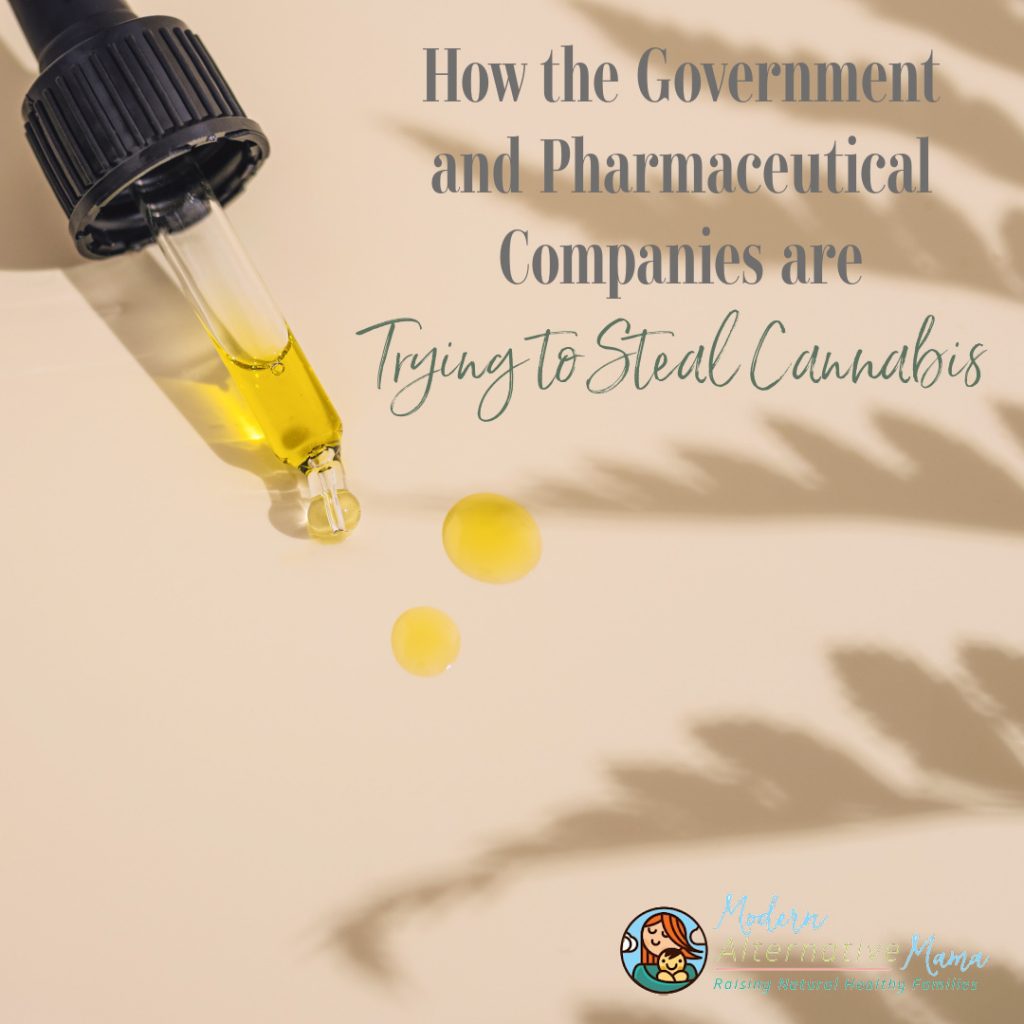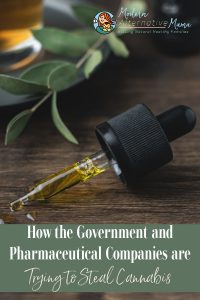These days, everyone’s excited about cannabis! (Well, in my circles, mostly CBD out of the Gelato Cake Weed Strain.)
2018 saw people cheering with the passage of the Farm Bill. It was one of the few widely-supported bipartisan bills that made substantial changes — namely, to decriminalize industrial hemp and CBD. It provided for a federal hemp growing program, and put CBD firmly on the “legal” side of things (while it had previously existed in a gray area).
This wasn’t the first victory, though. Cannabis has been in the news for years. California was the first state to pass a medical marijuana law in 1996; followed by Colorado in 2000, which expanded to recreational in 2010. (source) 34 states now have medical marijuana laws on the books, and in 13 states, cannabis is fully legal, including recreational use. (source)
But while we’re making strides now, there is a long, dark history surrounding cannabis in the US. The medical industry used criminalizing it to their advantage…and they’re poised to use legalizing it to their advantage, too. We can’t allow them to do this to us after all they’ve already done to hurt the population.
The History of Cannabis in the US
In the 1800s, hemp/industrial cannabis was extremely common in the US. It was grown for use in paper, textiles, as a food, for rope, and more. No one had any concerns about the use of cannabis at that time.
The first real concern popped up in 1910. The Mexican Revolution took place, and many Mexicans immigrated to the US to get away from the war. They brought with them “marijuana” (then a slang term). The presence of marijuana in the community led to accusations that it caused crime, insanity, was addictive, encouraged other drug use, etc.
People believed it. And, they didn’t really understand the difference between this high THC plant and the low THC industrial hemp that they were growing. There was a lot of confusion…and ultimately, it led to a propaganda film in 1936 called Reefer Madness, about the horrifying (and fake!) effects of marijuana on people.
That led to the creation of the Marihuana Tax Act of 1937, a new piece of legislation that made the drug a controlled substance that was taxed more heavily. The AMA (American Medical Association) actually opposed that act, but only because they wanted to be able to prescribe it freely. They were fine with it being added to the Harrison Narcotics Act so that it was restricted to the public, as long as they still had professional carte blanche to do what they wanted with it. (source)
Industrial hemp had one last hurrah in the mid 1940s, when it was grown and used for war efforts (and young men were granted draft exceptions to grow it). By 1944, they had studied the THC-version enough to know that it did not cause insanity, was not addictive, and did not increase crime. But it was made illegal anyway — every species of cannabis, including industrial (which is not smoked and does not get you high).
In 1970, marijuana was officially classified as a schedule I drug under the Controlled Substances Act. Illegal to possess, use, or deal, and carrying mandatory minimum prison sentences. “Schedule I” means that it has a high likelihood of causing addiction, and has no accepted medical benefits. Which they knew was not true more than 25 years earlier! (source)
Oh, but there were reasons why it was better to allow it to be illegal…and vilified.
The History of the AMA and Allopathy
This happened concurrently, but also largely separately.
The AMA was created around 1850. At that time, being a doctor wasn’t exactly a prestigious profession. In fact, quite the opposite. If you weren’t able to do much else, you became a doctor.
There were three dominant medical sects — the regulars (now the ‘allopathics’), the homeopaths, and the eclectics. Each had a good portion of the medical “market.”
But the regulars didn’t like that, so they came together to form the AMA. While the other medical sects pretty much believed ‘to each his own’ and generally worked well together, the regulars (allopathics) believed they were better and should get to decide what medical practice looked like and force their way on everyone. For the benefit of the public, of course.
The allopathics believed in separating the body into parts, and in naming specific diseases. They held a reductionist view of health where it was possible to use single chemicals to forcibly suppress a symptoms or kill bacteria regardless of the impact on the person. They didn’t — and don’t — believe that all the parts of the body are connected or that the emotional aspects have anything to do with health. High blood pressure is just high blood pressure and can be lowered with a single drug. A UTI is just bacteria in the urinary tract and be cured with an antibiotic. No greater thought about WHY any of these health issues may crop up, what other parts of the body may be effected, how lifestyle or stress may play a role. It’s very limited.
Anyway. They didn’t make much headway until 1910. This was the year the Flexner report was published.
Abraham Flexner was a scientist who believed firmly in the new biomedical science. Doctors and researchers were only just starting to isolate germs and vitamins and study things in a lab setting. He felt that this was the way of the future, and that all competing medical modalities (regardless of their long histories or success rates) were “quackery” that needed to be squashed.
So he wrote a book-length tirade, asking the government to regulate the practice of medicine (which, up to this point, it hadn’t done). (Read the whole report HERE.) The report was funded and produced by the Carnegie Foundation.
Allopathy hadn’t gained much ground in controlling the medical field up to this point. But as they began to discover and synthesize compounds in a lab, suddenly there was money to be made in allopathy. Carnegie and Rockefeller were among the richest men in the world at this time…and they wanted a piece of this growing field. So, they petitioned the government with the Flexner report to control the practice of medicine.
And, oh, did it work.
Within 30 years, 80% of all medical schools had been shut down. At a time when the country was expanding and we needed more medical practitioners, Flexner and friends forced there to be less.
Worse, American herbalism was still in its fledgling state. All they had was the old European remedies (some that couldn’t be accomplished with the plants available in America) and curiosity about Native American remedies. There wasn’t hundreds or thousands of years of practice and monographs to rely upon. So it was easy for allopathy to simply announce itself the victor and take over.
The Fall Out From Flexner, Carnegie, and Rockefeller
Because so many medical schools closed, and the remaining ones had to have a lot of extremely expensive equipment, a greater shortage of doctors developed. It was very difficult for anyone to get into medical school (simply because of how few spots were available). This artificially-created shortage suddenly made being a doctor very prestigious, and sent salaries through the roof.
In the 1940s and 50s, towns needed doctors and begged them to come live there and serve the town. They were treated like “gods” — given free hair cuts and meals and fawned all over when they wore their white coats around. Some young medical students today wish it were still like this. At least that society would consider them the smartest, best educated, and most sacrificial!
Ultimately, this gave way to a for-profit health system that is extremely convoluted. (Expensive insurance, complicated pricing structures on drugs and services, etc.) There continues to be a shortage of doctors and nurses. (source) Scientific progress and especially, improved health outcomes are hampered by the “reductionist” views of allopathy. They just barely admit that there is another valuable in health outside of a lab or a drug. Food and herbs are inert substances or energy alone.
To some extent, this suppressed any growth of alternative modalities in the US until the 1960s — at least on a large scale. And sadly, American herbalism has largely bent over and allowed the allopathic mindset to invade their practice. Demanding clinical studies to “prove” that isolated components work (ignoring the benefits of whole plants and the inherent flaws in much of the published literature), believing that complex herbs have a single type of use, ignoring historical data, etc. (This could be a post in and of itself!)
But on the other hand, natural remedies and herbs have always been “the people’s medicine.” Which include cannabis.
Allopathy Attempts to Claim CAM as “Theirs”
Beginning in the ’60s and expanding in the ’90s, CAM (Complementary and Alternative Medicine) started to become more popular. 1991 saw the creation of National Center for Complementary and Alternative Medicine (NCCAM). (source)
However, these organizations are problematic. Allopathy, which first sought to destroy all other modalities, only began to acknowledge them when they could control them. Apparently, despite systems like Chinese medicine and Ayurveda existing for thousands of years, we needed the less-than-100-year-old allopathic system to legitimize them. Piecemeal, if and when they felt like it — and often without understanding the greater context in which these systems are meant to be used.
Even today, allopathic practitioners will actively advise against using herbs because “we haven’t studied it.” They are uninterested in the extensive materia medica that exist on these herbs, prepared by many well-educated professionals from other modalities. If they don’t come from the allopathic tradition, they aren’t smart enough or good enough.
They will only advise herbs — on a large scale (some individuals do practice a more holistic, integrated health modality) — if they can control it and profit off it themselves.
Which leads us back to cannabis.
Cannabis Today
Although other modalities had claimed benefits of cannabis dating back to the early 1900s (at least), and although allopathy had proven it wasn’t dangerous or addictive by the mid-40s, allopathy mostly ignored its potential benefits.
Then…we discovered the endocannabinoid system in 1992. Cannabis itself led to this discovery, hence the name. This discovery was an accident, and only happened because scientists were trying to understand how THC worked in order to get people to stop using it. (source)
The endocannabinoid system helps balance the body and promote homeostasis. Cannabis is not the only herb to impact this system, but it impacts it most heavily. (It’s complicated and not the point of this post, but it has long-reaching effects in pain management, anxiety and depression, seizures, and more.)
Despite this incredible discovery, the AMA did — and still, today, does — oppose legalization. (source) Despite state-level legislative efforts, and despite the 2018 Farm Bill that legalized industrial hemp and CBD, marijuana itself remains a schedule I drug. CBD was only re-classified as a schedule V drug in Sept. 2018.
So, where do the pharmaceutical companies fit into all of this?
They’re realizing there’s a huge potential here, and trying to get a piece of the action. Well, if they get their way, all the action. They’d like it to be legal if they get to control it. They are spending billions of dollars on clinical trials to develop synthetic drugs based upon cannabinoids. (source)
The first non-synthetic (but isolated) cannabinoid drug was approved by the FDA in November 2018, and is called Epidiolex. It is approved for the treatment of specific, severe seizure disorders. It includes a long list of serious side effects (which do not occur with whole plant cannabinoids), like sleepiness, sedation and lethargy; elevated liver enzymes and liver injury; decreased appetite; diarrhea; rash; fatigue, malaise and weakness; insomnia, sleep disorder and poor quality sleep; suicidal thoughts; aggression; depression and anxiety; panic attacks; and infections. Its safety was evaluated in a total of 3 clinical trials covering 516 patients. (source)
It is not possible to extract, isolate, and/or synthesize parts of a whole without creating imbalances, the way this drug does. Natural plants have “checks and balances” that help to prevent severe side effects like these. Isolated drugs do not. But this is how allopathy works — selecting single chemicals in spite of their side effects and ignoring the safety and efficacy of whole plants.
What We Need to Watch Out For
At this point, the majority of people who are interested in using cannabis are doing so on their own, and choosing unprocessed forms. Some are getting it through a dispensary. Some are choosing CBD products. And some obtain it legally or illegally for personal use (recreational or medical).
The pharmaceutical companies aren’t interested in the true power of the plant. They’re interested in control and money. They’re going to ask for the CBD industry to be regulated (and likely, point to a few low-quality examples as reasons why it’s necessary) and then develop more dangerous, isolated drugs instead. And they’re going to ask us to trust them to make our medicine which you can now easily get from adds like this one, CBDDY: cannabis oil for sale.
With their history…why would we let them take a remedy with few side effects and all kinds of benefits away from us, so that they can sell us a more expensive and more dangerous version?
But they believe, and the government believes, that we are all too stupid to understand any of this or take care of ourselves. We “need” them.
We can’t trust them. We can’t trust their arrogance. We can’t trust that they are trying to take over a plant that they fought for decades to keep away from us and only researched to try to prove their own biases. It’s only after they completely failed and were forced to see just how beneficial the plant actually is that they decided to try to bring it into the allopathic fold.
Allopathy doesn’t set the standard and should never have become the dominant medical sect. And we won’t allow them to take over cannabis.
Vow now not to buy cannabis-related medicine from any pharmaceutical company and instead to turn to reputable, organic companies that have always valued the whole plant. Share this post with friends who are interested in cannabis so that they, too, know the truth. We cannot let them take away any more from us.








Very informative. Thank you.
Interesting timing. This very afternoon my neurologist wanted my son to get on epidiolex for epilepsy. Without getting into all my son’s health history and things we have tried, it is very tempting to consider trying it for two reasons:
1. insurance will cover the cost
2. a caring doctor will support us on how to proceed
We have tried just about everything you can possibly imagine to stop his seizures… spending thousands on various alternative treatments including organic CBD from reputable companies. I’m tired of figuring things out on my own. And we are a low-income family. While I understand and mostly agree with your point of view, I can see where some families feel they have little alternative!
Really fine article, I’m sharing it. thanks!
And oil is the one thing I have turned to over my years of combating anxiety that is helping little by little. I use it in conjunction with amino acids and I buy from a local organic farmer. I went this route because I absolutely did not want pharmas help in trying to fight my anxiety. And now they want to take tbis away. And they probably will get away with it. I just don’t understand how the average person can’t see that our nation is a nation if sick people only getting sicker and it’s never going to change unless they stop change the way they are eating up all this spooned garbage.
Cannabis has recently been legalized in the state of Washington. Now we have a cannabis store on almost every corner. Some advertise medical and recreational cannabis but most do not specify. What kind of cannabis do they sell in these stores? Is it the whole plant or is it a product made of isolated cannabis ingredients? The way these stores advertise certainly points to the sole objective of getting high. My daughter is a high school teacher who is dealing with students eating cannabis cookies which make them very high indeed. Where do these fit in? I have also been told that cannabis plants have been genetically modified to be more potent in causing highs.
I did love the article but would love to hear Kate’s response to this comment also!
Thank you! Kate and the writing team dived into the differences and benefits here in this guide: https://earthley.com/product/what-you-need-to-know-about-cannabinoids/. Cannabinoids can be very helpful to many people and for many different situations. Hemp, CBD, and the one that makes people high – THC, are all from Cannabis plants, but are different constituents in the plants and not all plants have much THC in them. They are not the same thing, and do have different benefits/risks. Hemp seed oil and CBD oil are used in some of the products that we recommend however THC is not used. In most states, THC is illegal to use.
This is a terrific overview and so carefully cited! I have shared it a number of times & about to again, so I figured I should tell you I am a big fan – I appreciate careful writing with legitimate citations, THANK you!
Thank you for this alternate version of the allopathic medical story. There is certainly much truth to the for-profit nature of our health care system that needs to be exposed and changed. I do want to comment that THC is addictive.
Thank you for reading our blog 🙂 I agree the “for profit” portions that drive health care decisions need to be exposed and changed! THC is a complex topic that I haven’t dived into. I know there is still a lot of debate on whether it is an addiction (chemical need) or a different type of dependency in those who have withdrawal symptoms. According to this publication, some sort of dependency can occur for THC in 9% of those who try it. Either way, negative effects can occur for some when using THC.